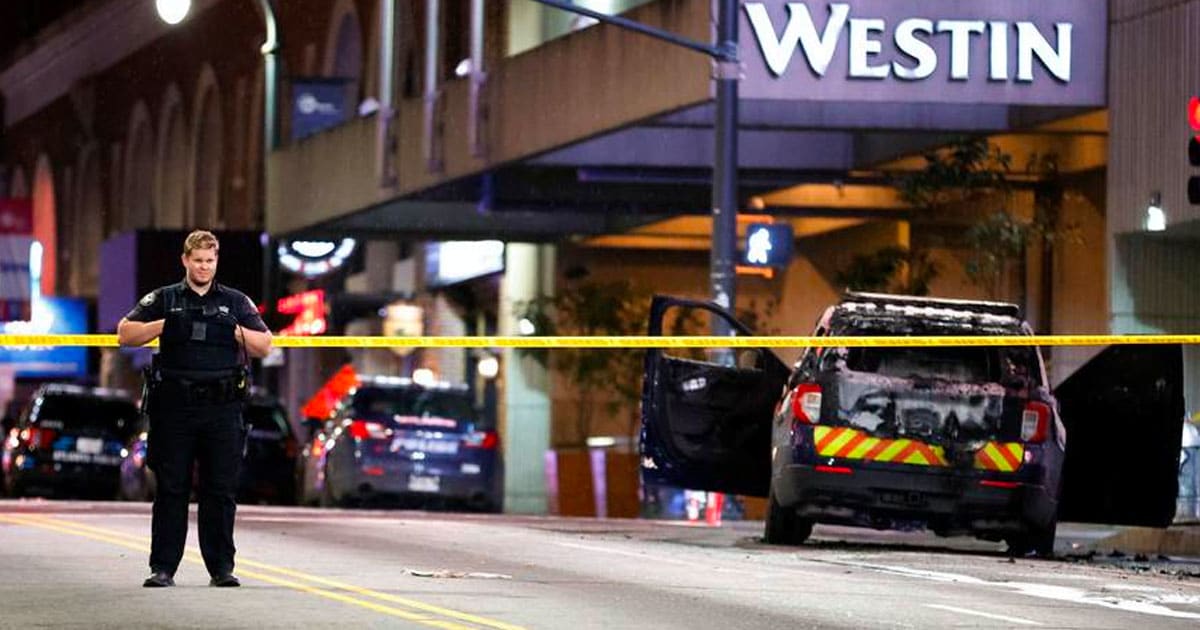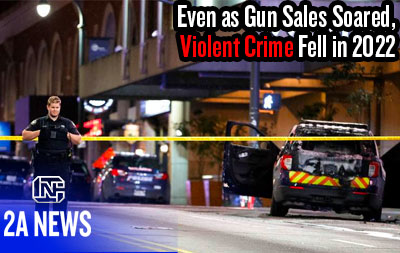 Opponents of gun rights cling to the fallacy that more guns equal more violent crime, when evidence proves this is far from the truth. They point to the tumultuous year of 2020 when both gun sales and violent crime soared without the slightest realization of the connection between the two phenomena.
Opponents of gun rights cling to the fallacy that more guns equal more violent crime, when evidence proves this is far from the truth. They point to the tumultuous year of 2020 when both gun sales and violent crime soared without the slightest realization of the connection between the two phenomena.
As every school kid knows, the year was marred by COVID-19 lockdowns that were immediately followed by widespread social unrest.
Violence ripped apart many major U.S. cities, and in such times it is quite understandable that the people choose to arm themselves to defend against the unknown. Disruptions swept through society, and many necessary services abruptly disappeared. As the social fabric is being ripped apart, the need for self-defense increases tenfold.
How violent was 2020? The national murder rate rose almost 30% from just the year before — the largest jump since 1905. But even as murders soared, the “clearance rate” for solving these heinous crimes plunged.
Is it any wonder that law-abiding citizens armed themselves?
As for gun sales, 2020 saw 21.8 million firearm purchases. This is nearly triple the 7.8 transactions from as recently as 2005.
Sales declined to 18.9 million in 2021 and 16.6 million in 2022. Still, the numbers from the last three years are unprecedented, and Second Amendment opponents want nothing more than to tie them to violent crime.
But a funny thing happened on the way to proving this linkage. Violent crime dropped.
That’s right. From a period that saw skyrocketing gun sales as Americans armed themselves against a wave of lawlessness, criminal acts fell. This telling statistic stands diametrically opposed to the anti-gun rhetoric that links ownership of firearms with mayhem.
Overall, gun ownership steadily increases even as crime rates rise and fall. If the link critics charge really exists, the rate of violent crime would also be on an upward trajectory nearly every year.
Take 2022 as an example.
According to the FBI’s latest annual report, the U.S. saw a welcome drop in homicides and other violent crimes. Overall, the rate fell 1.7%, a total that included a 6.1% decrease in murder and non-negligent manslaughter. Rape dropped 5.4% and aggravated assault slipped 1.1%.
For the record, violent crime also decreased in 2021, which marked a dramatic reversal of course from 2020’s frightening surge. Robbery last year showed a small increase of 1.3%.
Nationwide, the rate of 380.7 violent crimes per 100,000 people in 2022 was a fraction better than the 380.8 registered in 2019, the year before the pandemic.
And this came as nearly 60 million new guns entered U.S. society over three years. So, where exactly is the correlation between more firearms in the hands of citizens and violent crime?
Richard Rosenfeld is a criminal justice professor at the University of Missouri-St. Louis. He credited the drop in crime to the decrease in “stresses and strains” from the ravages of the pandemic.
He explained, “By and large what we’re seeing is simply a return to something approaching normal after the big changes associated with the pandemic.” In other words, the surge in gun sales seen in the last three years was more than offset by factors unrelated to firearm ownership.
But is there possibly another factor at work in the drop in violent crime during a rise in gun sales? After all, more and more Americans are now armed even as crime rates slip. Second Amendment enthusiasts have long argued that being armed has a definite deterrent factor for criminals.
It is increasingly a foolish venture to attack a stranger or enter an unknown home at night. The internet is full of good guys with guns utilizing the Second Amendment to protect their loved ones and property.
This, of course, is a connection the mainstream media will never make. But exercising gun rights may well be an underlying cause for the drop in violent crime. Wouldn’t that infuriate the anti-gun lobby?

